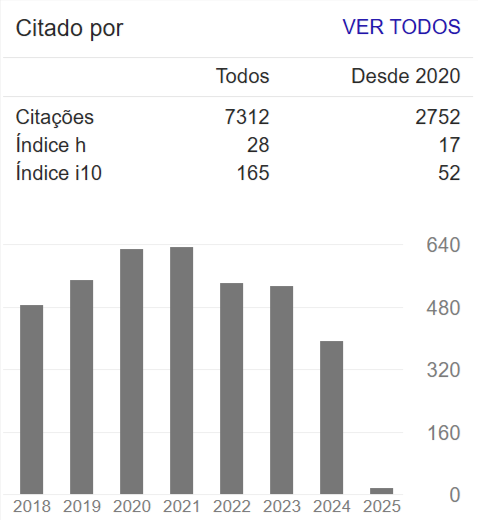Assessment of the characteristics and ethanol impacts on fuel contaminations in São Paulo State
Abstract
Fuel stations are an important source for soil and groundwater contamination, being commonly found in São Paulo State, particularly in urban areas. The main contaminants associated to these sources are aromatic hydrocarbons (benzene, toluene, ethylbenzene, and xylenes), polycyclic aromatic hydrocarbons and ethanol, used in Brazil for decades as a gasoline additive and a fuel itself. This research aimed to evaluate the main characteristics and controlling factors of soil and groundwater contamination associated to these sources. Based on the analysis of 516 contaminated sites there was no evident correlation between the regional location (geology and pedology) with the contamination characteristics. Half of the sites presented benzene plume lengths lower than 29 m, less than observed in similar studies conducted in the US. Hydraulic conductivity was identified as a conditioning factor for plumes extension, as well as the occurrence of natural attenuation processes. Ethanol presence in high concentrations (> 1000 mg L-1) was associated with longer benzene plumes and higher hydrocarbon concentrations. However, in general, the contamination associated to fuel stations in São Paulo State presented relatively small extension (90th and 75th percentiles lower than 73 and 43 m, respectively) and persistence limited by natural attenuation processes.

















